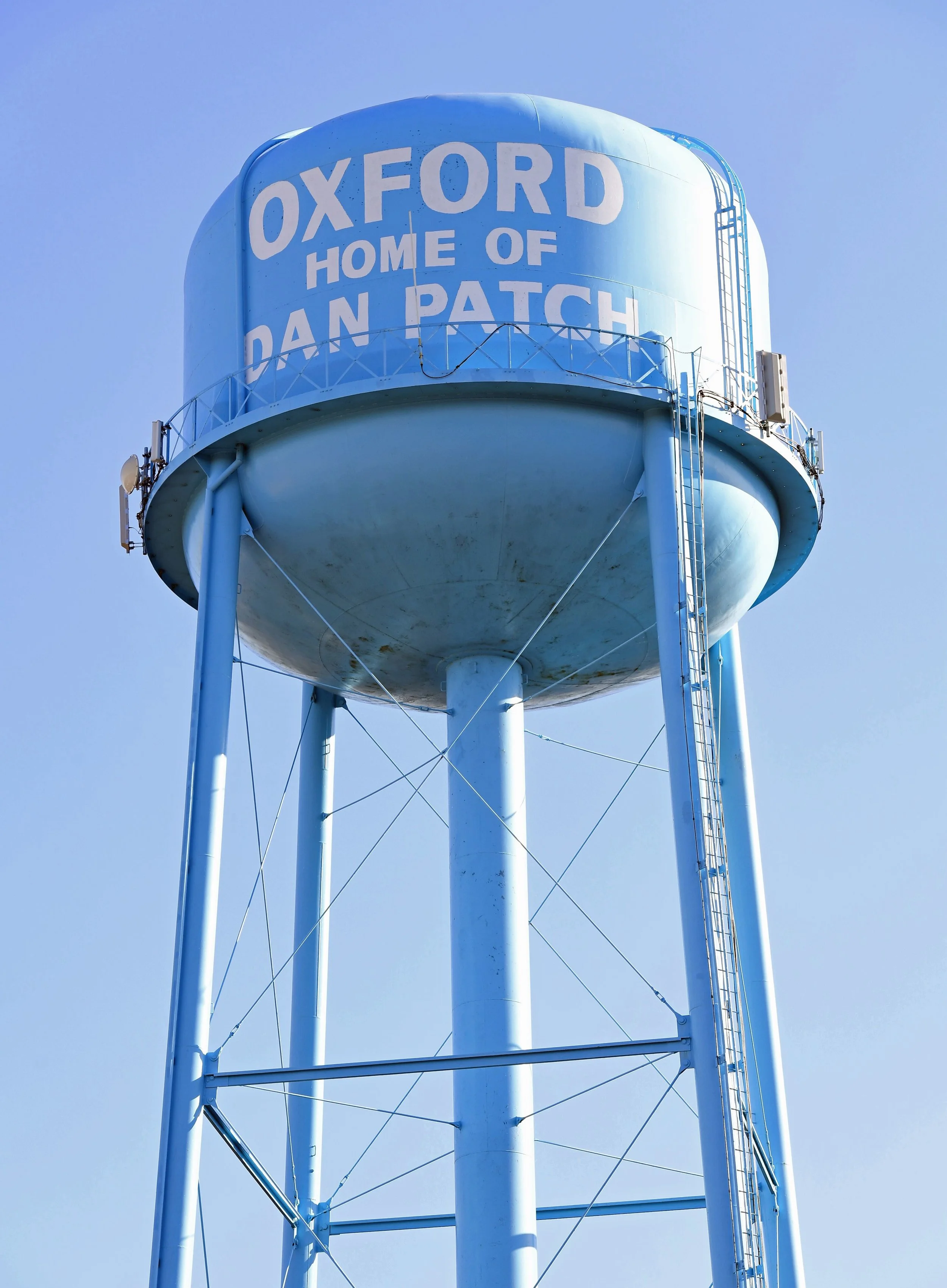




The Dan Patch Barn
By: Tom Ferry
Walk around this small Indiana town of fewer than 1,200 residents — and he is everywhere. He has a small cafe named after him and you will find him on the top of the town’s water tower. His likeness welcomes you on billboards as you enter the city limits and you will find him on varied murals, plaques and street signs throughout the town.
And yet, he left town for good nearly 116 years ago.
Each decade across those many years has showcased legendary athletes who captivated America and often transcended sports by branching into popular culture.
Their names are familiar to the average American sports fan in spite of passing time.
Babe Ruth, Jack Dempsey, Red Grange, Bobby Jones, Jesse Owens, Muhammad Ali and Michael Jordan.
But more than a century ago, from 1900 – 1909, a superstar in the world of sports captured the hearts and minds of Americans unlike any before him. He was a household name who endorsed cigars, washing machines, automobiles, toys, watches and much more. More than 90,000 would routinely come from miles away and gather at local fairgrounds to see him compete. Today, however, his name and exploits are largely forgotten.
His name was Dan Patch and he was called the “Epitome of Excellence in American Sports.” And even though he was billed as “kindhearted, generous and a staunch Methodist who never performed on a Sunday,” this idol was truly not human. He was, though, arguably the greatest harness racing horse who ever lived.
Dan grew up in the small town of Oxford, Indiana in a barn that still stands today. The horse’s owner, Daniel Messner Jr., was a local storekeeper in Oxford who had aspirations of grandeur when he bred his five-year-old mare Zelica to the champion standardbred stallion Joe Patchen. Those dreams were quickly shattered on April 29, 1896 when the newborn foal arrived with legs so crooked and knees so knobby that some thought it would be a blessing if he didn’t survive the night.
But survive he did. In the winter of 1899, three-year-old Dan Patch would often be seen pulling a cart through Oxford’s snowy streets, trailed by young boys who grabbed on the back and were pulled on their sleds for a free ride. Residents of the small town always thought of Dan as their own.
At Dan Patch’s racing debut at a nearby fair during the late summer of 1900, it was reported every store in Oxford shut their doors so residents could journey to see him race. During the next two years, Dan’s fame grew as he raced at tracks throughout the Midwest and East Coast at summer fairs and exhibitions. At the conclusion of each summer’s Grand Circuit, he would return to Oxford and the adulation of hundreds who would cheer his arrival at the train station. He would lead the walking procession back to his barn and those who were there stated he knew exactly how to navigate his way back to his stall.
Dan Messner would routinely turn down offers to sell the horse but in early 1902, an offer of $20,000 was too tempting and Dan Patch was sold. On March 18, 1902, the beloved hometown champion left Oxford by train and journeyed on to immortality. Dan would race across America during the next seven years and be viewed and loved by thousands. He never lost a race and set a world record in the mile that would stand for 32 years.
Like so many small towns across America, Oxford has suffered during the past half century from the completion of the interstate highway system. People no longer needed to travel secondary roads that took them through the business districts of small towns in order to get to their ultimate destination. And unlike previous generations, baby boomers have often moved on from the towns of their birth to brighter lights, different lifestyles, and better jobs. Passing time in Oxford has seen the closure of the high school, bowling alley, movie theater, speakeasy and even Dan Messner’s general store. One thing remains, however, and that is local pride in Dan Patch.
Each September, the hometown horse is remembered during the town’s annual Dan Patch Days festival. His original 60x44 foot barn continues to sit nearly 75 feet from the Messner home. Dan Messner boarded up the structure before he bought his first automobile in 1914. The Messner family has continued to reside in the home to this day, yet never entered the barn’s interior that remained boarded up for nearly 100 years. The family did, however, keep up the exterior. Messner’s son Richard lived in Oxford until his death in 1992 and repainted the barn’s roof every few years with the phrase that is still present today, “Home of Dan Patch 1:55.”
The barn was finally opened in February 2006 when Dan Messner’s grandson and the home’s current resident John Messner and his wife Pam began a major renovation to the structure. Discovered in its interior were, among other things, remnants of two sulkies, three horse stalls, and Dan Patch’s tack trunk, bearing the horse’s name in faded letters. And on the slats within what once was Dan’s stall, you could look closely and see evidence of cribbing marks. While the barn is only open to the public on special occasions, this permanent landmark draws a steady number of passersby throughout the year who will stop their cars and take photos. And try to imagine a time, a place, a man and a horse.